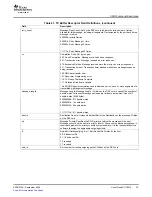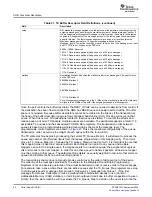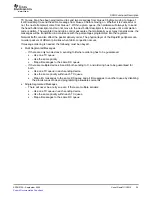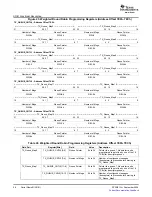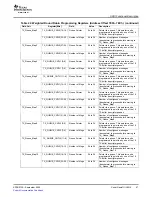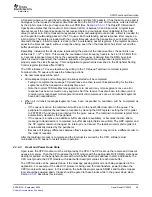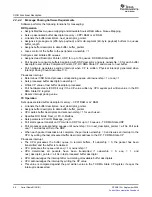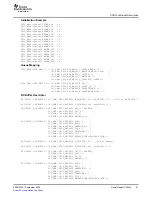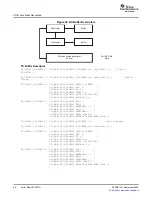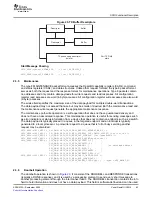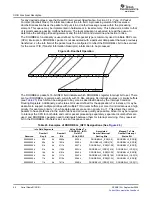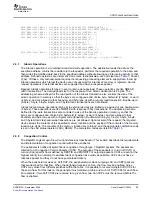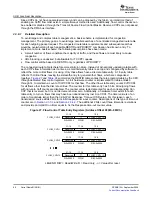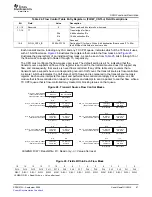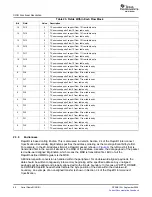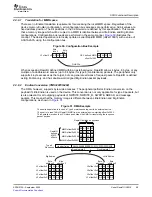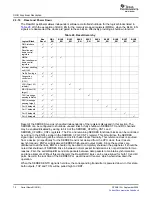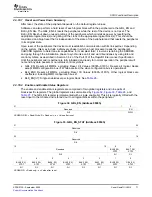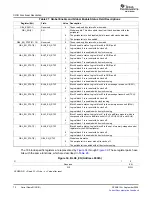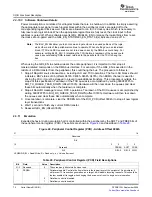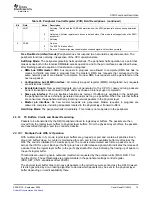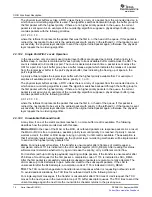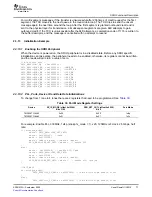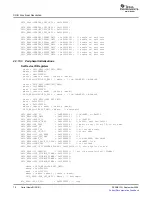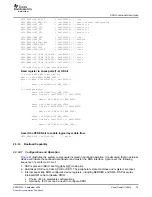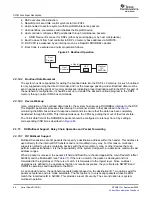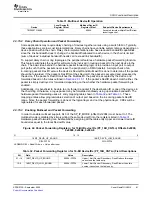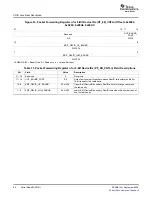
www.ti.com
Reserved
RIO_LSUn_FLOW_MASKS
(Address Offsets: 0x041C,
0x043C, 0x045C, 0x047C)
31-16
R, 0x0000
LSU n Flow Mask
15-0
R/W, 0xFFFF
TX Queue1
Flow Mask
RIO_TX_CPPI_FLOW_MASKS0
(Address Offsets: 0x0704)
31-16
R/W, 0xFFFF
TX Queue0
Flow Mask
15-0
R/W, 0xFFFF
TX Queue3
Flow Mask
RIO_TX_CPPI_FLOW_MASKS1
(Address Offsets: 0x0708)
31-16
R/W, 0xFFFF
TX Queue2
Flow Mask
15-0
R/W, 0xFFFF
TX Queue5
Flow Mask
RIO_TX_CPPI_FLOW_MASKS2
(Address Offsets: 0x070C)
31-16
R/W, 0xFFFF
TX Queue4
Flow Mask
15-0
R/W, 0xFFFF
TX Queue7
Flow Mask
RIO_TX_CPPI_FLOW_MASKS3
(Address Offsets: 0x0710)
31-16
R/W, 0xFFFF
TX Queue6
Flow Mask
15-0
R/W, 0xFFFF
TX Queue9
Flow Mask
RIO_TX_CPPI_FLOW_MASKS4
(Address Offsets: 0x0714)
31-16
R/W, 0xFFFF
TX Queue8
Flow Mask
15-0
R/W, 0xFFFF
TX Queue11
Flow Mask
RIO_TX_CPPI_FLOW_MASKS5
(Address Offsets: 0x0718)
31-16
R/W, 0xFFFF
TX Queue10
Flow Mask
15-0
R/W, 0xFFFF
TX Queue13
Flow Mask
RIO_TX_CPPI_FLOW_MASKS6
(Address Offsets: 0x071C)
31-16
R/W, 0xFFFF
TX Queue12
Flow Mask
15-0
R/W, 0xFFFF
TX Queue15
Flow Mask
RIO_TX_CPPI_FLOW_MASKS7
(Address Offsets: 0x0720)
31-16
R/W, 0xFFFF
TX Queue14
Flow Mask
15-0
R/W, 0xFFFF
SRIO Functional Description
Table 24. Flow Control Table Entry Register n (FLOW_CNTLn) Field Descriptions
Bit
Field
Value
Description
31–18
Reserved
0
These read-only bits return 0s when read.
17–16
TT
Transfer type for flow n
00b
8-bit destination IDs
01b
16-bit destination IDs
1xb
Reserved
15–0
FLOW_CNTL_ID
0000h–FFFFh
Destination ID for flow n. When 8-bit destination IDs are used (TT = 00b),
the 8 MSBs of this field are don't care bits.
Each transmit source, including any LSU and any TX CPPI queue, indicates which of the 16 flows it uses
with a 16-bit flow mask.
Figure 28
illustrates the registers that contain the flow masks, and
Figure 29
illustrates the general form of an individual flow mask. As can be seen from
Table 25
, bits 0 through 15 of
the flow mask correspond to flows 0 through 15, respectively.
The CPU must configure the flow masks upon reset. The default setting is all 1s, indicating that the
transmit source supports all flows. If the register is set to all 0s, the transmit source does not support any
flow, and consequently, that source is never flow-controlled. If any of the table entry counters that a
transmit source supports have a corresponding non-zero Xoff count, the transmit source is flow-controlled.
A simple 16-bit bus indicates the Xoff state of all 16 flows and is compared to the transmit source mask
register. Each source interprets this result and performs flow control accordingly. For example, an LSU
module that is flow-controlled can reload its registers and attempt to send a packet to another flow, while a
TX CPPI queue that is flow-controlled may create HOL blocking issues on that queue.
Figure 28. Transmit Source Flow Control Masks
LEGEND: R/W = Read/Write; R = Read only; -n = Value after reset
Figure 29. Fields Within Each Flow Mask
15
14
13
12
11
10
9
8
7
6
5
4
3
2
1
0
FL15
FL14
FL13
FL12
FL11
FL10
FL9
FL8
FL7
FL6
FL5
FL4
FL3
FL2
FL1
FL0
R/W-1
R/W-1
R/W-1
R/W-1
R/W-1
R/W-1
R/W-1
R/W-1
R/W-1
R/W-1
R/W-1
R/W-1
R/W-1
R/W-1
R/W-1
R/W-1
LEGEND: R/W = Read/Write; -n = Value after reset
SPRUE13A – September 2006
Serial RapidIO (SRIO)
67
Submit Documentation Feedback

